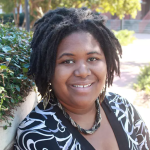Suze Orman: 4 Simple Ways To Grow Your Emergency Fund Right Now

Commitment to Our Readers
GOBankingRates' editorial team is committed to bringing you unbiased reviews and information. We use data-driven methodologies to evaluate financial products and services - our reviews and ratings are not influenced by advertisers. You can read more about our editorial guidelines and our products and services review methodology.

20 Years
Helping You Live Richer

Reviewed
by Experts

Trusted by
Millions of Readers
Life is full of unpredictability. Having cash saved to handle emergencies is one vital way many Americans can avoid unnecessary credit card debt due to that uncertainty.
People with at least $2,000 saved for emergencies have a 21% increase in financial well-being, according to Vanguard. People with at least three to six months of living expenses saved, see another 13% increase, according to the brokerage.
Personal finance expert Suze Orman is well-known for her love of having emergency savings. In a recent article on her website, Orman shares simple tips Americans can use to grow their emergency funds. Here are four ways you can begin, starting today.
Start Small
Many financial experts recommend having at least three to six months of living expenses saved for emergencies. That number can be overwhelming, especially if you’re struggling to save.
Orman warns not to let that deter you. Instead, she suggests starting small. Let’s consider an example of $7,500 to cover three months of living expenses. She notes that hitting that goal within a year would require saving $625 monthly. What if that’s too difficult?
“If that’s too steep a commitment, divide by 18 to see what you would need to save to meet your goal within a year and a half. Still too steep? No worries! Divided by 24; do you think you could save that sum to reach your goal within two years?” noted Orman in another article on her site.
Customize the plan to your situation and start with a small commitment. Developing the saving muscle is more important than anything else.
Automate Your Savings
Life gets busy, and it’s easy to forget to save. Or, you may think it’s fine to keep savings stored in your checking account. Both can deter you from achieving your savings goal.
Orman advises creating a separate savings account to make it easier on yourself.
“Automate a direct deposit into a separate bank or credit union account that is only for your emergency savings. Do not keep emergency savings in your everyday checking account. This money needs its own special account,” added Orman on her site.
Most banks let you establish direct deposit free of charge on a weekly, bi-weekly or monthly basis. Additionally, many employers let you direct money from each paycheck to a second bank account, such as a savings account. You can do that to increase savings.
Maximize Interest Opportunities
Savings and checking account interest rates at your local bank are often paltry. Lower interest rates make it more difficult to grow your emergency savings. High-yield savings accounts traditionally offer competitive rates that can boost your efforts.
“Some savings accounts offer annual interest of 3% or more these days, which is a lot better than the 0.03% you might be earning on a regular checking account,” added Orman. You may need to look online to find such rates, but most online banks offer the same FDIC coverage available through your local bank.
Once you reach a couple of months of living expenses, Orman recommends considering certificates of deposit (CDs) or U.S. Treasuries to maximize interest opportunities further.
Revisit It Monthly
Growing your emergency savings isn’t necessarily a set-it-and-forget-it activity. Orman advises to actively monitor the account.
“The final step is to log in to your new savings account and take a look once a month. And then give yourself credit for what you have already achieved: Every month your account grows, it builds financial security. And that’s going to help make life less stressful,” noted Orman on her site.
Saving a sizable amount isn’t easy, but monitoring it can help you stay on top of your goal. Who knows, you may think of one-time opportunities to save even more.
Growing a fully-funded emergency fund is challenging, but achievable. Following these steps increases the chances of reaching your goal and, in turn, improves financial well-being.
More From GOBankingRates
 Written by
Written by  Edited by
Edited by 

























